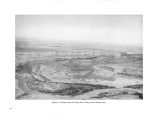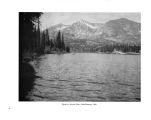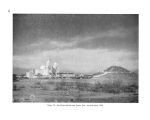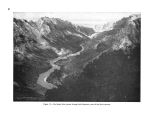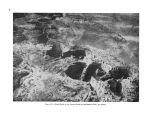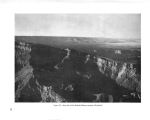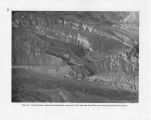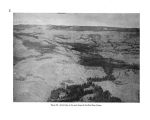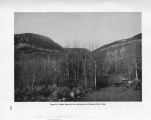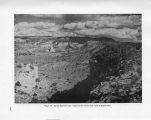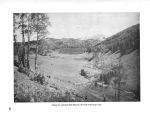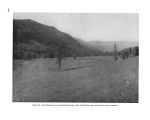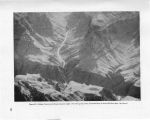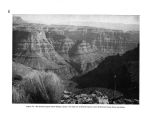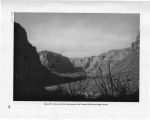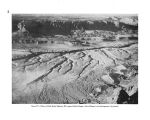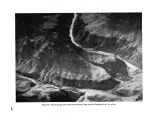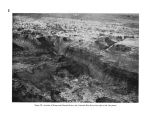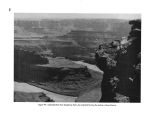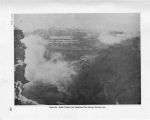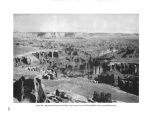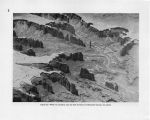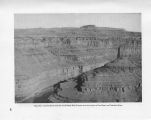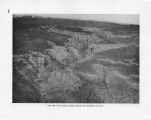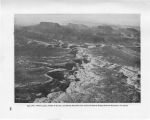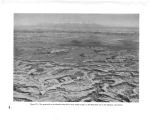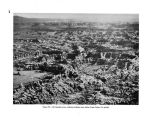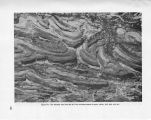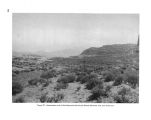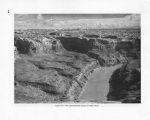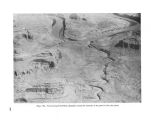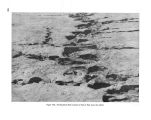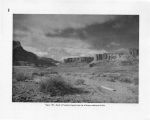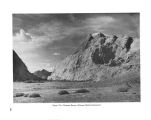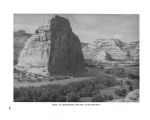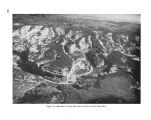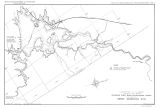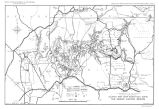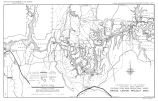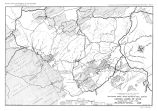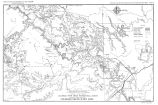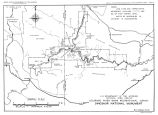| OCR Text |
Show Kanab Creek, in southern Utah, commenced to erode severely in 1883. Three years later a gully 60 feet deep, 70 feet wide, and 15 miles long had been formed. 47 Formerly timbered slopes on the Chuska Mountains of northwestern New Mexico have been eroded down to bedrock in some places as a result of overgrazing. 48 Wind has added its influence to that of water in scouring away the unprotected topsoil. Winds are strong over the Colorado River Basin, but in the early days of settlement, dust storms and whirlwinds were relatively small in scale and infrequent. Trampling hoofs loosened and broke the protective, all- embracing grip of the virgin grass roots. When the plant cover was depleted, the soil dried out and become pulverized. Now the whirling dust columns march across the desert and semi- arid lands of the basin during the spring, summer, and fall months. Finer soil particles are sucked high into the air and sometimes are carried hundreds of miles; coarser particles are rolled and skipped along the bare surface, accumulating in drifts when they encounter an obstacle. Dust storms last for days, particularly in the basin of the Little Colorado River, obscuring the horizon. When the wind blows continuously, " blow holes," where the soil is lighter or the vegetation scantier, send up such a stream of dust from a given spot that from a distance it resembles the billowing smoke of a factory. The great dust storm of May 12, 1934, stimulated national interest in the problem of erosion. This spectacular dust cloud was the first one in history big enough to retain its identity as it swept across the country from the Great Plains to beyond the Atlantic Coast. It blotted out the sun over a large part of the nation and sifted through the windows of New York skyscrapers. When that happened it began to dawn on the public that something had gone wrong with the land resources of the nation. 49 Meaning of soil erosion to human welfare.- The seriousness of soil erosion to the future of the entire Nation has been emphasized over and over again by experts, who have ably presented the picture of slow destruction. The dying of the soil is all the more insidious because the first stages often have 47 Thornthwaite et al, 1942, p. 103. 48 Bennett, 1939, p. 794. 49 Bennett, 1939, p. viii. been slow enough to escape notice from one generation to another. By the time they have speeded up and become conspicuous, complete restoration is usually hopeless. The Soil Conservation Service estimates there are in the entire country some 200 million erosion gullies. These, and the still more widespread sheet- erosion, already have ruined 14 percent of the United States or an area nearly eight times as large as Wisconsin. An additional 35 percent of the land is now threatened. These facts regarding soil erosion in the country at large help to give some perspective regarding conditions in the Colorado River Basin, where aridity accentuates the problem. In that region, . . . crops often are poor and pastures thin, not because of insufficient rainfall but because too much of the available rain is permitted to run to waste. In other words, although the actual climate is unchanged, the effective agricultural climate or effective rainfall in terms of water at the plant roots has been tending in many areas, under this artificial acceleration of runoff, toward the equivalent of a very dry climate. When this tendency is combined, as it generally is, with a continuing loss of fertility through erosion, the farmer faces a serious prospect of steadily declining yields and steadily dropping income. 50 Obviously this prospect of decline applies also to other soil crops of the region, such as native plants and wildlife. The Forest Service estimates that it takes one- fifth more range of the tall- grass type to feed a cow now than when the range was first used. On short- grass range, nearly twice as much acreage is needed now; on sagebrush- grass range, more than three times the original acreage; and on salt- desert shrub, three and one- half times the former amount. Continuous overgrazing has changed the whole character of the range, reducing the quantity and quality of the forage and deteriorating the soil itself. 51 The importance to human welfare in the Colorado River Basin of this reduction in the production capacity of range land may be judged from the fact that grazing outranks all other agricultural interests there manyfold. Soil washed downstream from the uplands is de- 5° Bennett, 1941, p. 14. 51 Lord, 1938, p. 67. 65 |




























